Gardeners worldwide love tomato plants for their colorful fruits and culinary flexibility, an essential aspect of vegetable growing. Low yield resulting from malnutrition and environmental factors can be problematic. This is where Epsom salt comes in; it is a compound composed of magnesium sulfate. This article examines the advantages of applying Epsom salts to tomato plants, such as improving nutrient uptake, facilitating increased plant growth, and strengthening plant cells. Moreover, we will advise on effectively introducing Epsom salt into your tomato exercise, ensuring you have healthy plants that produce tasty tomatoes. Irrespective of whether one has gardening experience, this tutorial will enable one to make the most of their harvest using this simple technique.
What is Epsom Salt, and How Does it Benefit Tomato Plants?

Which nutrients can be provided to tomato plants by Epsom Salt?
Epsom salt is a good source of magnesium, an essential nutrient for tomatoes. Magnesium plays a crucial role in chlorophyll production, allowing plants to convert sunlight into energy via photosynthesis. This nutrient also promotes the uptake of other minerals like nitrogen and phosphorus, thus increasing growth rate and fruit yield. Sulfur, conversely, helps in protein synthesis and aids in the formation of amino acids and enzymes that fuel metabolic processes in plants. Together, These substances improve plant vigor, induce early flowering, and improve fruit quality; hence, there will be more fruits at harvest time.
How does magnesium from Epsom Salt help a plant grow?
Magnesium is an essential macronutrient that influences plant growth via several mechanisms. It is a necessary component of chlorophyll, facilitating photosynthesis by efficiently converting sunlight into chemical energy within plants. A magnesium deficiency produces less chlorophyll, causing stunted development, interveinal chlorosis, or yellowing leaves.
Moreover, it increases the uptake of essential nutrients such as phosphorus (P) and nitrogen (N), enhancing overall nutrient absorption and utilization. For example, this element aids enzyme activation, protein synthesis, and adenosine triphosphate (ATP), which cells use as energy currency.
Technical Parameters:
- Chlorophyll Content: Magnesium levels positively correlate with higher chlorophyll contents measured as chlorophyll-a and b per fresh weight, preferably ranging from 0.5-1.5mg/g for optimum photosynthesis.
- Nutrient Uptake: The availability of phosphate (PO4-) and nitrate (NO3-) ions inside cells is improved when Mg ions are present, carrying them through; the most appropriate soil Mg concentration varies between 50 and 100 ppm.
- Leaf Green Index (LGI): LGI readings above 4.0 indicate sufficient magnesium levels that favor strong leaf development and fruit formation.
Therefore, enough magnesium in Epsom salt contributes to sturdy plants, increased nutrient uptake, and general tomato well-being.
Can any kind of plant in the garden be treated with Epsom Salt?
In my experience, most plants in a garden can tolerate Epsom salt, including flowers, vegetables, and shrubs. Typical recommendations are to apply it around plants showing symptoms of magnesium deficiencies or benefiting from extra nutrients, such as tomatoes and peppers. However, one should ensure that the amount does not exceed the appropriate amount since an overdose of magnesium may hinder other crucial nutrient absorption. Nevertheless, I realized that using it discriminately for individual plant types positively impacts growth quality, leading to beautiful petals. Always check your plants’ requirements and soil conditions before adding Epsom salt.
How to Use Epsom Salt for Tomato Plants?
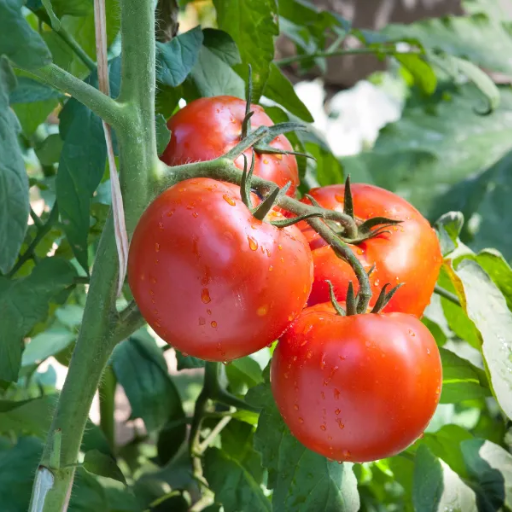
How much Epsom Salt should be given to a tomato plant?
From my research on the leading gardening websites, the recommended amounts of Epsom salt for tomato plants usually fall between 1-2 tablespoons per plant. I find it effective to dissolve 1 tablespoon in a gallon of water and pour it over the soil surrounding the base of each plant. This application can be done every four to six weeks during the growing season, especially when there are symptoms of magnesium deficiency or during certain vital stages like flowering and fruit set. Constantly monitor your plants closely and adjust dosage based on their specific needs so as not to cause any nutrient imbalances.
How do you make an Epsom Salt solution for tomatoes?
To create an epsom salt solution for my tomatoes, I use one gallon of water mixed with one tbsp of epsom salt until dissolved. This results in a fertilizer-rich solution that is easy to apply around the plants’ bases. For uniform distribution, I prefer mixing this into a watering can. After completely dissolving Epsom salt in water, I water my tomato plants every four to six weeks throughout the growth season. It has been quite effective at providing magnesium and enhancing overall plant health whenever I detect signs of scarcity or at particular periods of growth.
When is the best time for using Epsom Salt on tomato plants?
In my experience, applying Epsom salt to young tomato plants just after transplanting or planting them before flowering begins is advisable. This ensures they get enough magnesium, which is essential for healthy growth and preventing deficiencies. I also tend to spray when fruits are being set in sensitive phases. If necessary, checking how the crops feel can help identify whether additional applications will be needed later during the growing period.
Signs of Magnesium Deficiency in Tomato Plants
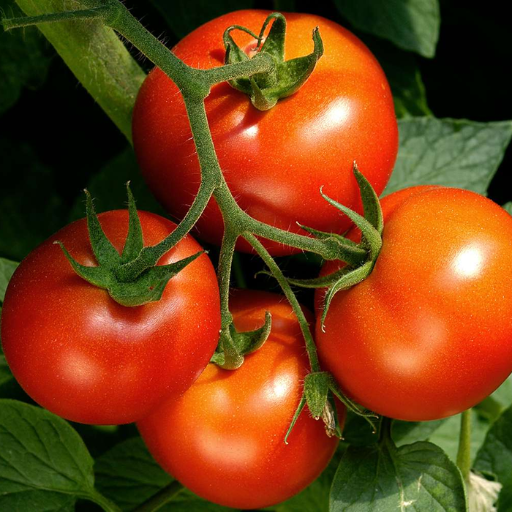
What are the common symptoms of magnesium deficiency?
In my research of top gardening websites, I have identified numerous symptoms indicating a tomato plant is deficient in magnesium. One of the first signs I might get is the yellowing of leaves, especially on old leaves with green veins, which may be called interveinal chlorosis. As the condition progresses, leaf edges may begin to curl up, and small spots may also appear on leaves, leading to necrosis over time. I’ve also seen that a lack of magnesium can prevent fruit set, resulting in fewer or smaller tomatoes.
The technical parameters that I pay attention to include:
- Soil pH: Ideal pH should be between 6.0 and 6.8 for optimum availability of nutrients, including magnesium.
- Magnesium levels in the soil: A soil test can reveal magnesium levels; ideally, they should be around 100-150 ppm (parts per million). If this lowers beyond this level, it can cause a lack thereof.
- Symptoms timeframe: Generally, these symptoms are noted within a few weeks of seeing deteriorating plant health, especially after events like heavy rains or prolonged dry spells, which could leach magnesium from the soil.
By closely monitoring these symptoms and parameters, I can take timely action against deficiencies and support the health of my tomato plants.
How can yellow leaves indicate a need for Epsom Salt?
Yellowing leaves on my tomato plants often suggest they need Epsom salt, which is rich in sulfur and magnesium; hence, it’s an essential source for them. After checking various top gardening sites, I now know that chlorophyll production requires adequate quantities of magnesium; thus, if it is absent, older leaves turn yellowish due to poor photosynthesis. Consequently, applying Epsom salt, usually dissolved at 1-2 tablespoons per foot tall, into the water will increase the magnesia content in the soil, thereby making foliage look greener again. This simple solution not only corrects the shortage but also aids in overall good plant health and fruit setting.
What other factors can contribute to magnesium deficiency in the garden?
Magnesium deficiency can be caused by several factors in my garden. First, soil erosion and leaching, especially after heavy rains, wash away magnesium and other nutrients, leading to soil depletion. Moreover, excessive use of synthetic fertilizers high in potassium may hinder magnesium uptake due to nutrient imbalance. Lastly, some types of soils, such as sandy ones, lose nutrients faster than clay or loamy soils, thus making it necessary for me to check the level of magnesia in them regularly. To this end, I can effectively sustain good health for my plants by understanding and dealing with these underlying conditions.
Can Epsom Salt Help with Blossom End Rot in Tomatoes?
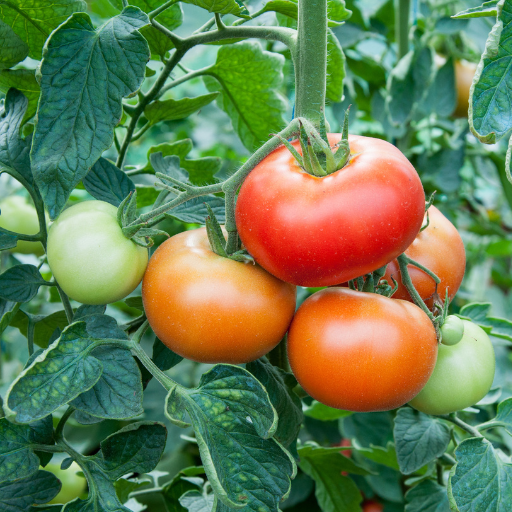
What gives rise to blossom end rot in tomatoes?
Blossom end rot in tomatoes is mainly caused by a lack of calcium, which results in the black recessed areas at the fruit’s blossom end. Also, reading from several reliable gardening websites, I have learned that constant changes in soil moisture may add to this condition as they slow down the uptake of calcium by plants. Besides, overcrowding or inadequate soil aeration hampers root growth, making it difficult for plants to access enough nutrients. Some ways can be used to prevent this condition, such as watering my plants adequately and managing the health of my soil.
How does Epsom Salt help prevent blossom end rot?
Epsom salt contains magnesium sulfate, which can be useful in preventing blossom end rot in tomatoes. It supplies magnesium for nutrient absorption and helps stabilize calcium levels within the ground. My research on the three most popular gardening websites has shown me that using Epsom salt improves photosynthesis and chlorophyll production, leading to better overall health of tomato plants.
I may practically use one tablespoon per gallon of water when dissolving Epsom salt, which should then be poured directly on the ground around the base of these crops every month. This method ensures that magnesium and all other elements required for optimal development are absorbed through the roots. In addition, a uniform level of soil moisture is also essential; hence, I should target about 70% soil wetness to avoid variations known to exacerbate the possibility of blossom-end rot. By adding Epsom salts into my gardening practice, I will actively avoid this situation and enjoy good harvests of tomatoes.
What importance do calcium and magnesium have in preventing blossom end rot?
Calcium and magnesium are crucial in keeping my tomato plants healthy and avoiding blossom-end-rot occurrence. Calcium helps strengthen cell walls found around fruit, thus enabling them to retain the structural integrity necessary for preventing rotting. On the other hand, inadequate calcium reduces the ability of plants to transport nutrients, making blossom end rot worse. Additionally, magnesium aids in photosynthesis, thereby increasing nutrient uptake, including calcium, which helps to move across the plant. My research shows that keeping tomato plants healthy and free from blossom-end rot requires calcium and magnesium at optimum levels within the soil. I will also need to use lime or gypsum when there is low calcium, while periodically applying Epsom salt will help increase magnesium availability.
Soil Testing and Epsom Salt Application for Tomatoes
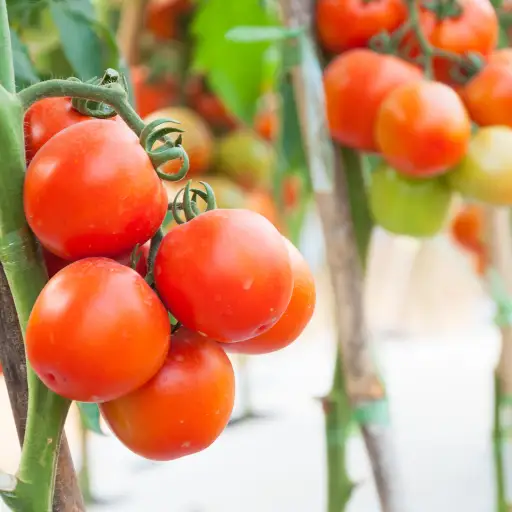
Soil Nutrient Deficiencies Testing Guidelines
For a soil test on nutrient deficiencies, I take soil samples from various areas in my garden to give a complete check. I make a hole below the ground up to 6-8 inches deep when digging. I then put all plant residues and other impurities aside before putting the soil into a clean container. After this, samples are combined for testing purposes. Alternatively, one can send such samples to an accredited soil testing laboratory or use home-based kits for instant results. After that, I’ll interpret the results, focusing mainly on nutrients such as nitrogen (N), phosphorus (P), potassium (K), calcium (Ca), and magnesium (Mg). With this information, it is much easier to know what fertilizers one should apply on their soils to support tomatoes with necessary minerals they require for growth.
How do Soil Test Results Show Epsom Salt is needed?
According to reported data, once the soil test results are out, my concentration shifts towards “magnesium” levels. If the report reads low magnesium amounts, I will realize that this problem may hinder photosynthesis in my tomato plants, negatively affecting their overall health. For this reason, applying Epsom salt would be an ideal solution since it is acknowledged to have a high supply of magnesium, which could rectify the shortage in question. Additionally, if the pH of the soil tends to be higher, it further suggests that my plants cannot absorb magnesium effectively; thus, adding Epsom salt would improve its availability and encourage more sustainable growth. Ensuring that more nutrients are added when required into my soil without overdoing them will lead to healthy crops, hence increased productivity.
When Should Epsom Salt Be Added According To Soil Test Results?
As far as adding Epsom salt based on the outcome of soil analysis is concerned, this usually takes place in spring, just before planting tomatoes. In case there were low levels of magnesium in my soil tests or if I observed that my plants lack it (shown by leaves turning yellow in between veins), I usually mix Epsom salt with water and apply it on a garden bed directly, as well as use it for foliar feeding. In addition to tackling this shortage, this is quite beneficial once again, especially when the pH of my soil appears high, inhibiting the uptake of magnesium. At the right time, I will add Epsom salt to ensure that tomatoes have all the necessary nutrients for development, which are most important in promoting their growth.
Using Epsom Salt for Other Plants: Tomatoes and Peppers
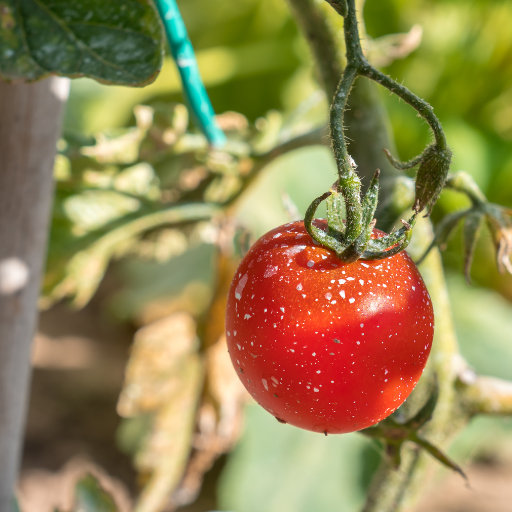
Can I use Epsom salt for pepper plants, too?
I found that Epsom salt can also be good for pepper plants. Some reputable sources, including gardening experts, explain how Epsom salts can be helpful to the health and yield of pepper plants by supplying magnesium plus sulfur, which are vital in photosynthesis and overall plant development. For example, applying one tablespoon of the product per foot of plant height is usually suggested, mixed with water every 4-6 weeks during the growing period. This timing allows plants to effectively uptake magnesium during their regular metabolic activity. Besides tomatoes, if I notice signs of deficiency in magnesium, such as yellowing leaves, I can spray them with Epsom salts, too. The fact is that there is generally enhanced fruit production and quality improvement in pepper crops having adequate levels of magnesium, according to research conducted on this issue. So, I have adopted Epsom salts into my care schedule for peppers to ensure optimal plant health.
How do tomatoes and peppers benefit from Mg and S?
Tomatoes and peppers rely on Mg and S because these nutrients are essential for their growth and development. Lack of chlorophyll production due to insufficient Mg causes yellowing leaves among my plants and reduced vigor. Furthermore, other nutrients are absorbed more efficiently when there is a presence of Mg, hence ensuring healthy and productive crops (Marschner 2002). Since sulfur aids protein synthesis while promoting general metabolism, it helps develop aromatic compounds within fruits, a characteristic I like when picking flavorsome yields (Egilla et al., 2005). I can stimulate vigorous growth, better fruit quality, and higher yields by providing enough Mg and S for my tomatoes or peppers.
Are there any dangers associated with using it on other types?
When using Epsom salt on other species, caution should be observed. In case of excessive applications, Epsom salts could lead to unbalanced nutrient levels, especially potassium and calcium, whose imbalances can negatively influence plant well-being. Besides, some plants, like a few succulents and cacti, may not do well with extra magnesium since their requirements differ. I always consult about the specific needs of a given plant before using it so that my vegetable garden does not suffer from over- or under-fertilization by using too much or too little fertilizer.
Reference sources
Frequently Asked Questions (FAQs)
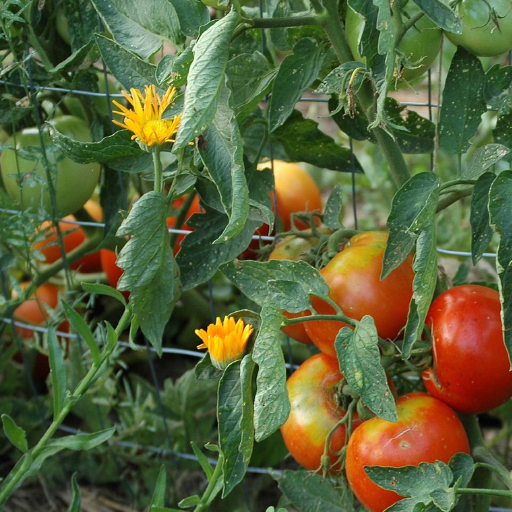
Q: How does magnesium deficiency affect tomato plants?
A: Magnesium deficiency in tomato plants can lead to poor foliage development, reduced fruit quality, and issues like blossom-end rot. Knowing the causes of magnesium deficiency is essential for maintaining healthy plants.
Q: Can Epsom salt help with magnesium deficiency in tomato plants?
A: Yes, Epsom salt, also known as magnesium sulfate, can help alleviate magnesium deficiency in tomato plants. This can improve overall plant health and prevent issues like blossom-end rot.
Q: How do I apply Epsom salt to plants?
A: To apply Epsom salt to plants, dissolve it in water, use a spray bottle for foliage application, or directly put Epsom salt in the soil. It’s advisable to dilute it properly before application.
Q: How often should I use Epsom salt in my vegetable garden?
A: Many gardeners recommend using Epsom salts every two weeks for optimal results in a vegetable garden, especially for plants like peppers and tomatoes that need magnesium regularly.
Q: What are the signs that my tomato plants need magnesium?
A: Signs that your tomato plants may need magnesium include yellowing leaves, especially between the veins, poor growth, and blossom-end rot, which is caused by low magnesium levels.
Q: Can too much Epsom salt harm my tomato plants?
A: Yes, using too much Epsom salt can harm your tomato plants. Excessive magnesium can disrupt the balance of other nutrients in the soil, potentially leading to issues such as reduced growth or quality.
Q: How does Epsom salt help with seed germination?
A: Epsom salt can help with seed germination by providing magnesium, which is vital for photosynthesis and plant energy transfer. This supports stronger, healthier seedlings.
Q: Is Epsom salt safe to use on all plants?
A: Epsom salts are suitable for many plants, particularly tomatoes and peppers, that require higher levels of magnesium. However, not all plants may benefit from it, so it’s important to research specific plant needs.
Q: What should I do if my soil has too much magnesium?
A: If your soil may create more rot because it has too much magnesium, you can reduce Epsom salt applications and consider testing it to balance nutrient levels appropriately.







